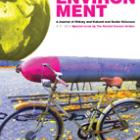LeCain, Timothy James. “An Impure Nature: Memory and the Neo-Materialist Flip at America’s Biggest Toxic Superfund Site.” Global Environment 11 (2013): 16–41. Republished by the Environment & Society Portal, Multimedia Library. http://www.environmentandsociety.org/node/7584.
In 1995, more than 300 migrating snow geese perished after landing in the flooded Berkeley Pit, a toxic open pit copper mine in the northwestern United States. Many commentators subsequently saw the snow geese as symbols of a pure natural world destroyed by the impure artificiality of humans and their technologies. In this essay, however, I avoid such oppositions by drawing on new materialist theoretical approaches that reject anthropocentric thinking and instead emphasize the powerful materiality of cultural phenomena, both for humans and snow geese. This “neo-materialist flip” suggests that industrial artifacts like the Berkeley Pit defy modernist categories of natural and artificial, or pure and impure, because they are simultaneously both material and cultural. Hence the enduring material reality of the pit persists as a site of memory that will both create and embody the culture of snow geese, humans, and countless other living things for centuries to come.
— Text from The White Horse Press website
All rights reserved. Made available on the Environment & Society Portal for nonprofit educational purposes only, courtesy of Timothy James LeCain and XL edizioni.


